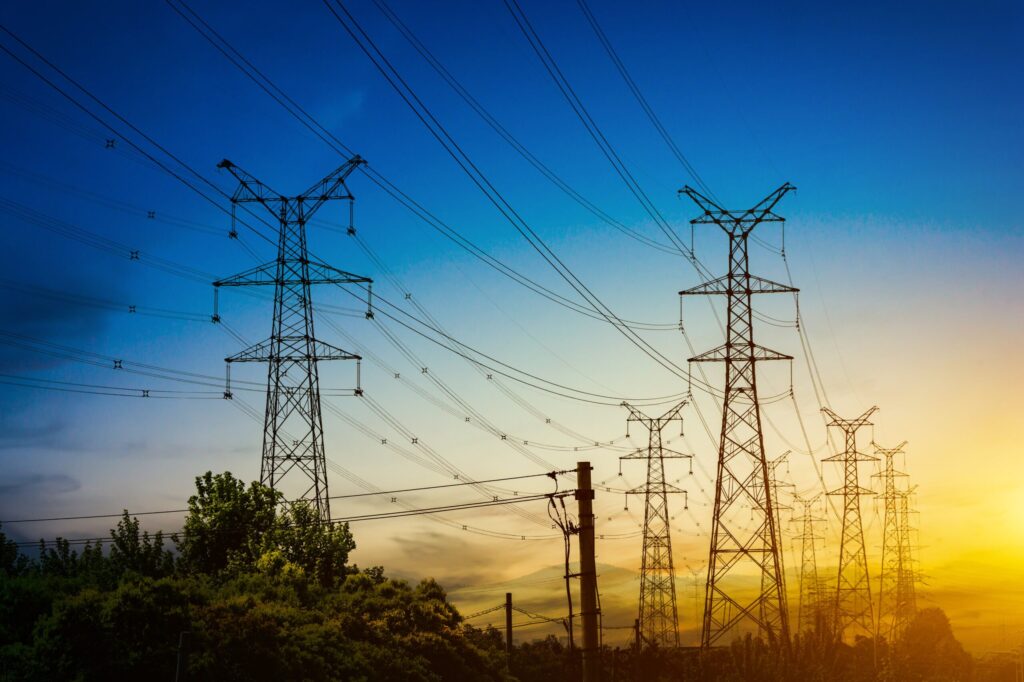How will tomorrow’s energy be delivered? This isn’t just a question for engineers and policymakers. It’s a pressing concern for all of us.
At the heart of this future vision lies solar energy distribution, a concept poised to revolutionize how we power our homes and businesses. Forget the clunky, unresponsive power grids of the past. Today, we stand on the brink of a new era, where the marriage of advanced technology and renewable energy sources promises a smarter, more sustainable way of living.
Solar energy isn’t just a fleeting trend. It’s the key to unlocking a future where green living and efficient energy use go hand in hand. As we get into the world of smart grids and solar power, prepare to discover how this innovative technology is not only shaping our energy consumption but also paving the way for a brighter, cleaner tomorrow.
The Evolution of Energy Grids
The energy landscape is undergoing a monumental shift, transitioning from traditional grid systems to more advanced, efficient smart grids. The traditional grid, a legacy of the 20th century, has served us well but is increasingly showing its age. It was designed for a one-way flow of electricity and struggles with the demands of modern energy needs.
This traditional system is often overburdened, leading to inefficiencies and power outages. In contrast, smart grids represent a new chapter in energy management.
Smart grids are dynamic and adaptable, designed for the two-way flow of both electricity and information. They employ advanced technologies like digital communication and automated control systems to allow for real-time monitoring and response. This adaptability is crucial when integrating renewable energy sources, such as solar power, into the grid.
Traditional grid vs smart grid? The difference is clear. While the former struggles with fluctuating renewable energy, smart grids thrive on it. They can adjust to the variable nature of solar power to ensure a stable and efficient energy supply.
The evolution of smart grids is not just a technical upgrade. It’s a revolution in how we think about and use energy.
In Texas, for example, smart grid deployments have enabled better integration of solar energy. It’s contributed to the state’s growing renewable energy portfolio.
These grids can balance supply and demand, reduce waste, and even predict and prevent outages which makes them a pivotal component in the modern energy landscape.
How Do Smart Grids Work?
Understanding smart grids requires a dive into the world of high-tech energy systems. Unlike the old, traditional grids, smart grids are like the internet for electricity.
They use digital technology to manage the flow of electricity from all sources, including renewable ones like solar power. This means they can handle electricity more smartly and efficiently.
So, what’s inside a smart grid? First, there’s the Internet of Things (IoT). This technology connects different devices across the grid, from solar panels on your roof to the power plant miles away. It’s like having a big network where every device can talk to each other.
Then, there’s Artificial Intelligence (AI). AI in smart grids is like having a super-smart brain that can make decisions quickly. It looks at how much electricity is needed and where it’s needed, then it adjusts the flow in real time.
These technologies mean smart electrical grids can do some pretty cool stuff. For example, if there’s extra power from solar panels, the grid can send it to where it’s needed most. Or, if there’s a problem somewhere in the grid, AI can spot it and fix it before it causes a blackout.
This smart grid energy approach is not only more reliable, but it’s also better for the environment.
Solar Energy and Smart Grids: A Perfect Match
When we talk about the future of energy, solar power and smart grids are like two pieces of a puzzle that fit perfectly together. Solar energy, with its clean and renewable qualities, has become a key player in our energy system.
But solar power has a unique challenge: it’s not always consistent. The sun doesn’t shine all the time, and this can make solar energy a bit tricky to manage. That’s where smart grids come in and play a crucial role in renewable energy.
Smart grids are like the brain of the energy system. They’re super smart and can adjust to different energy situations.
For instance, when there’s a lot of sun, and solar panels are producing more power than we need, smart grids can store this extra energy or send it to places that need it more. On cloudy days, when solar power might not be enough, smart grids can pull in energy from other sources to make sure everyone still gets the power they need. This way, smart grids help make solar energy reliable, no matter the weather.
The role of smart grid in renewable energy is huge. They make using solar power easier and more practical.
For energy providers, this means they can offer clean, solar energy to more people. And for consumers, it means getting reliable and eco-friendly power at home.
In some places, like California, where solar energy is big, smart grids have helped integrate solar power into the energy system smoothly. This has led to more homes powered by the sun, less reliance on fossil fuels, and a big step towards a cleaner environment.
Impact on Consumers and the Environment
The integration of smart grids and solar energy is not just a technological advancement. It’s a game-changer for both consumers and the environment.
For starters, let’s talk about how this affects you and me, the everyday energy consumers. With smart grids managing solar energy, people are seeing real benefits in their electricity bills. Solar energy, being renewable, can significantly reduce electricity costs.
Plus, smart grids help in efficiently managing this energy to ensure that you’re getting the most bang for your buck.
Now, let’s look at the big picture: the environment. The shift to solar energy and smart grids is making a huge dent in reducing carbon emissions.
Traditional energy sources, like coal and gas, release a lot of carbon dioxide when they’re burned for power. Solar energy, on the other hand, is clean and green. By using the sun’s power, we’re cutting down on harmful emissions.
This shift is crucial in tackling global warming and making our planet a healthier place to live.
Smart grids and solar energy are also about energy independence and security. With traditional energy sources, we often rely on imports and are at the mercy of fluctuating market prices. Solar energy gives us a chance to produce our own power.
And with smart grids managing this energy, we have a more stable and secure energy system. No more worrying about big power outages or energy shortages.
Chariot Energy’s Role in Solar Energy Distribution and Smart Grids
Chariot Energy is at the forefront of the solar energy revolution. We’re all about seamlessly integrating smart grid technology into our solar energy solutions. Our approach isn’t just about supplying power; it’s about reinventing how power is delivered and managed.
We’re tapping into Texas’ abundant sunshine and converting it into clean, affordable energy for homes across the state. Our Texas-sized solar farms and strategic partnerships, like those with leading solar materials manufacturers, ensure we provide the best in solar technology.
Our unique Solar Buyback program exemplifies this innovation. It’s not just about using solar energy. It’s about making it work for you.
When your solar panels produce more energy than you need, we buy it back. This approach encourages more households to adopt solar energy, knowing they can contribute to and benefit from the grid.
Preparing for a Smart Solar Future
The ongoing advancements in smart grid technology are remarkable. We’re seeing the development of more efficient battery storage systems, which means solar energy can be stored and used even when the sun isn’t shining.
Innovations in grid resiliency are also underway, ensuring that energy systems can withstand and quickly recover from disruptions. This is crucial in maintaining a consistent and reliable energy supply in the face of challenges such as extreme weather events.
Moreover, consumer energy management tools are becoming more sophisticated. These tools give individuals more insight and control over their energy use which leads to smarter consumption and cost savings.
With these advancements, consumers are not just passive recipients of energy. They become active participants in a sustainable energy ecosystem.
Step into a Brighter Future with Solar Energy Innovation
Throughout this exploration of solar energy distribution, we’ve seen how smart grids are reshaping the landscape of renewable energy. Chariot Energy is a frontrunner in this transformation and offers a glimpse into a future where solar power is accessible, efficient, and rewarding.
Our commitment to harnessing the sun’s energy through advanced technology and strategic partnerships stands as a testament to our dedication to green living and sustainable practices.
Ready to embrace this shift? we invite you to explore our tailored Solar Buyback plans. Discover the best choice for you in our ‘Find My Plan’ section, and step into a sunnier future.


